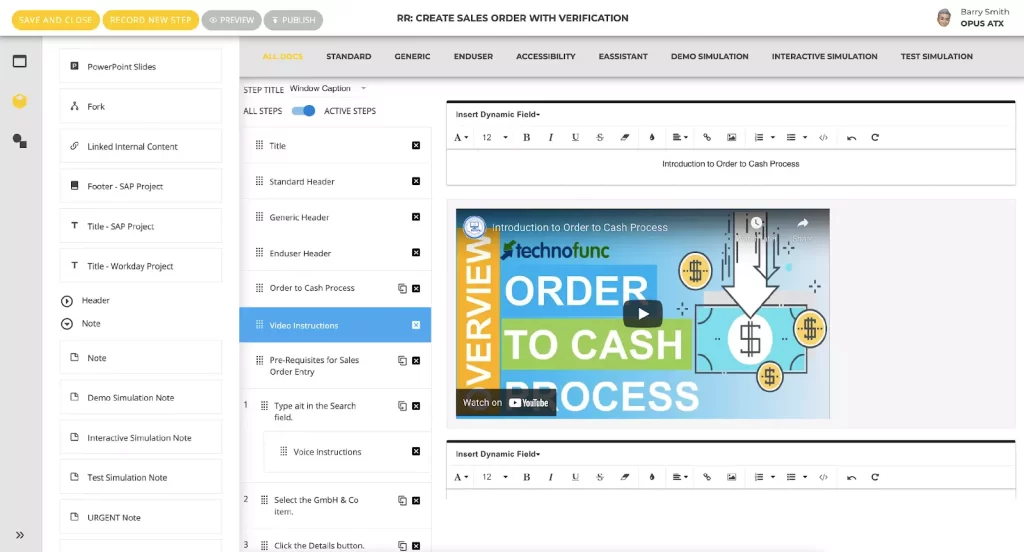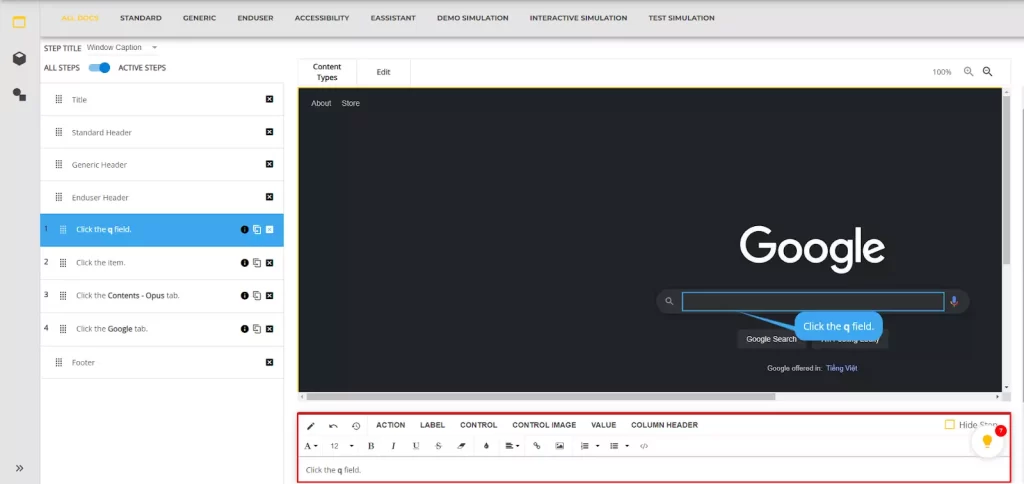The principles of Standard Operating Procedures and Application Work Instructions are crucial to achieving the desired outcomes from our workforces, and the applications they use, particularly mission-critical enterprise applications such as ERP, CRM, HCM, etc… Both forms are vital for employee training and serve as tools for efficient business operations.

These two forms differ from one another in important ways. Let’s learn more about how they differ and how they should be used.
What is an SOP?
A Standard Operating Procedure (SOP) is a set of guidelines for carrying out one or more specific duties that comprise standard procedures. SOP, then, is a process for performing work that is composed of standardized tasks.
SOPs are created to assist the workforce in performing their tasks to ensure desired outcomes are achieved consistently and productively. Enterprises can save time by implementing Standard Operating Procedures, particularly useful when training new hires and with employees changing or absorbing new roles, but also important for ensuring continuous compliance with critical processes regardless of an employee’s experience.
In addition, Standard operating procedures enable new hires to catch up fast with the tasks they conduct within the system. SOP helps standardize workplace activities by establishing consistency throughout the organization while limiting unneeded errors because it was developed using empirical research and quality assurance checks.
Regarding its applications, Standard operating procedures are often utilized in fields such as medical, engineering, aviation, military, restaurant, hotel, etc.
What is an Application Work Instruction?
An Application Work Instruction is a document that outlines the proper methods for carrying out certain tasks, with detailed explanations of the must-be completed tasks to produce high-quality work.
This is also a crucial document for employees to understand the nature of the job they are performing, as well as its needs, and plays an essential role in developing a knowledgeable workforce that boosts organizational performance.
Difference between SOP and Work Instructions
Work instructions and standard operating procedures are both crucial for a business’s operations management. The creating work instructions will detail each task sequence if the standard operating procedure is imagined to involve various tasks completed in a set order. These two resources work in tandem to address three crucial inquiries: who, what, and how.
SOP and WI may be used by various businesses in one or both capacities. We will examine the table below to contrast the variations between work instructions and standard operating procedures, as well as the benefits and drawbacks of each:
| Standard Operating Procedures | Work Instructions | |
| Definition | Standard Operating Procedure (SOP) is a set of guidelines for carrying out one or more specific duties that comprise standard procedures. | A work instruction is a document that outlines the proper methods for carrying out certain tasks, with detailed explanations of the must-be completed tasks to produce high-quality work. |
| Features | SOP directs employees to complete a task in a predetermined order to assure quality in accordance with established standards. | Work instructions give employees step-by-step guidance on how to do a task. |
| Roles | Optimizing business processes. Boosting productivity at work. Limiting unneeded mistakes. | Saving time for training new employees. Building a skilled workforce. Ensuring the quality of the proposed work. |
| Pros | Standard operating procedures offer an intuitive understanding of various occupations’ workings, connections, and function in the enterprise’s broader business operations. | Work instructions give specific information on the task that must be done, assisting employees in having a clear understanding of the work they perform. |
| Cons | Standard Operating Procedures merely give an overview of the process rather than a thorough account of how each step is carried out. | Since job instructions are not systematic, employees only have a general understanding of their jobs and how they relate to those of others in the enterprise’s broader operating system. |
SOP and Application Work Instructions management solution – Epilogue Opus
Opus, known as a Digital Adoption Platform allows you to generate and standardize SOPs for application tasks and then deliver these to your workforce. Especially, Opus will play an essential role in guiding them to execute their tasks at their moment of need and without causing the user to leave their workflow. This eliminates costly, disruptive, and largely ineffective application training and delivers a consistent standard for task execution.


Conclusion
For employees to perform efficiently, both process and work instructions are required. This determines the caliber of work and whether or not a business is operating at its best.
In case of your employees do not follow the work instructions, this article can help:
How To Deal With An Employee Not Following Work Instructions?
In businesses or organizations, quality assurance and the relationship between the work of the departments are typically ensured when there is high specialization between departments and with an amount of personnel. For organizations to be able to run efficiently and reduce expenses, accepting varied tasks is a crucial step.
With the help of this post, we hope you have a better understanding of SOPs and work instructions, are aware of their importance to businesses, and can make an informed decision on which ones to create for your own.





